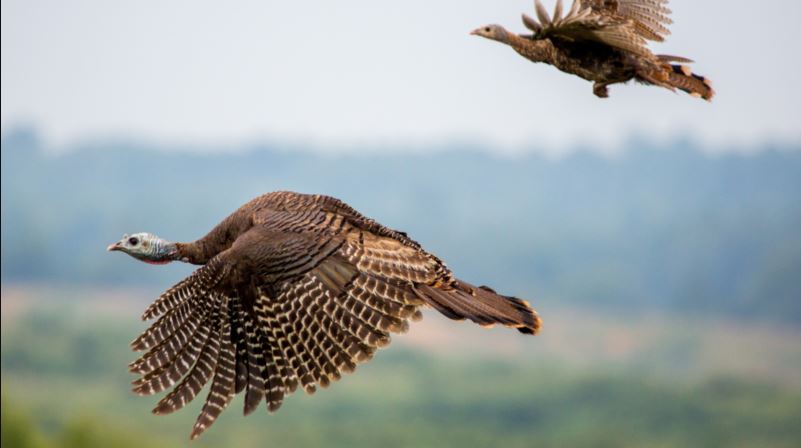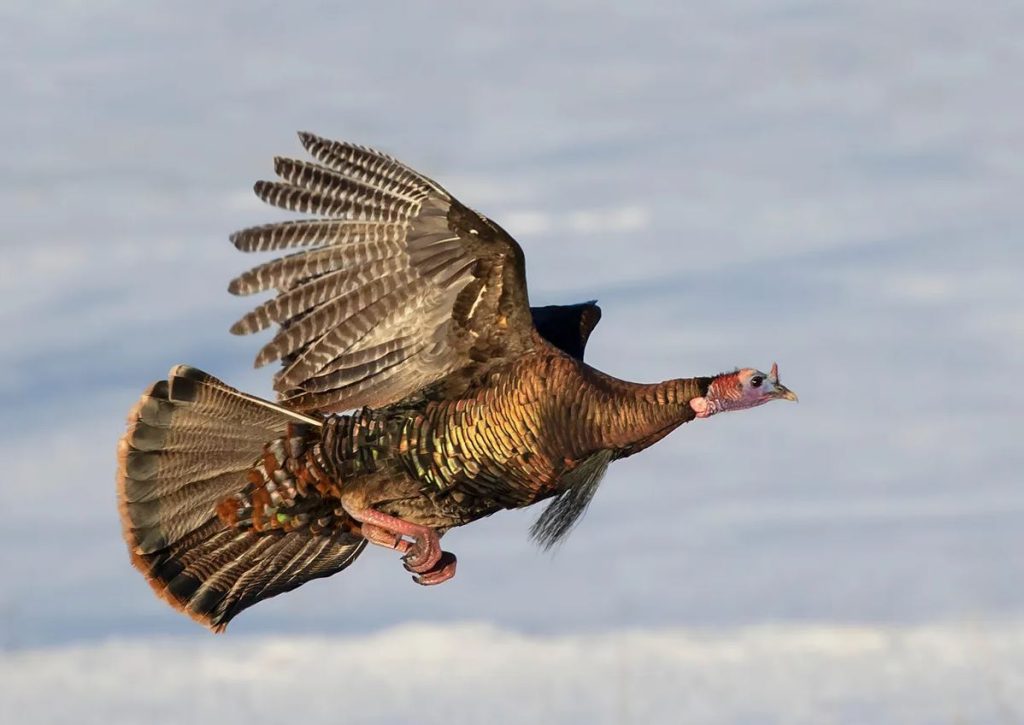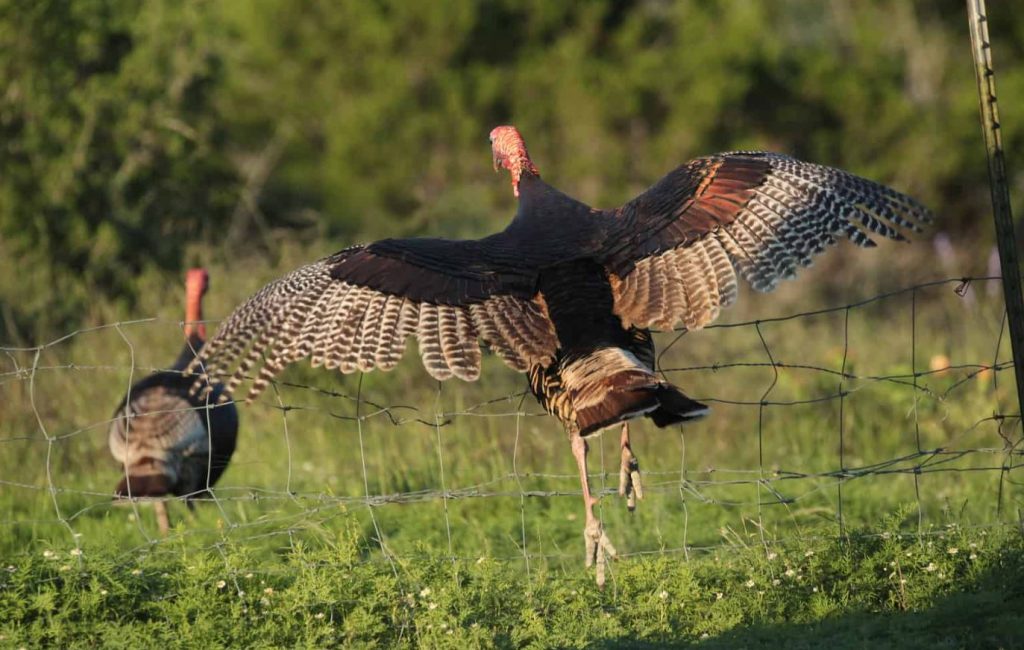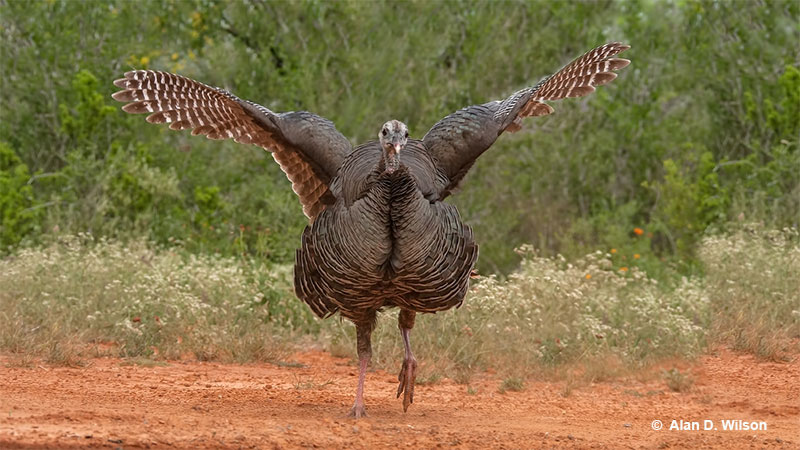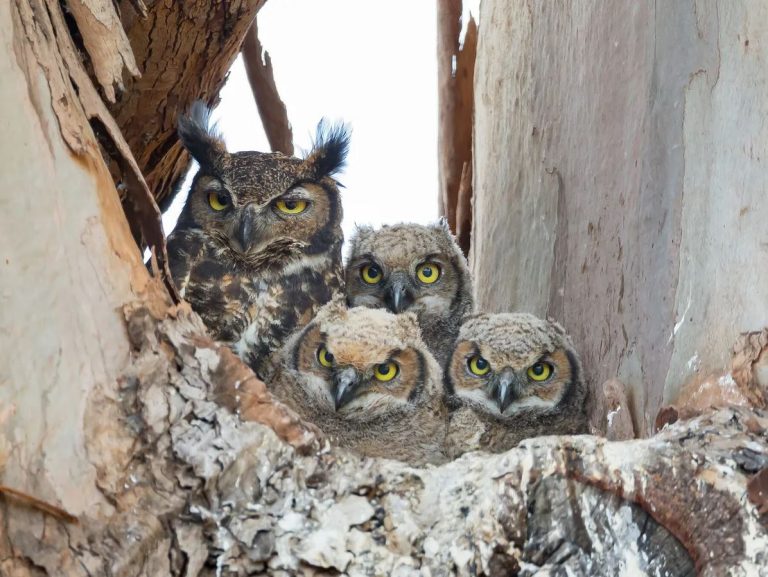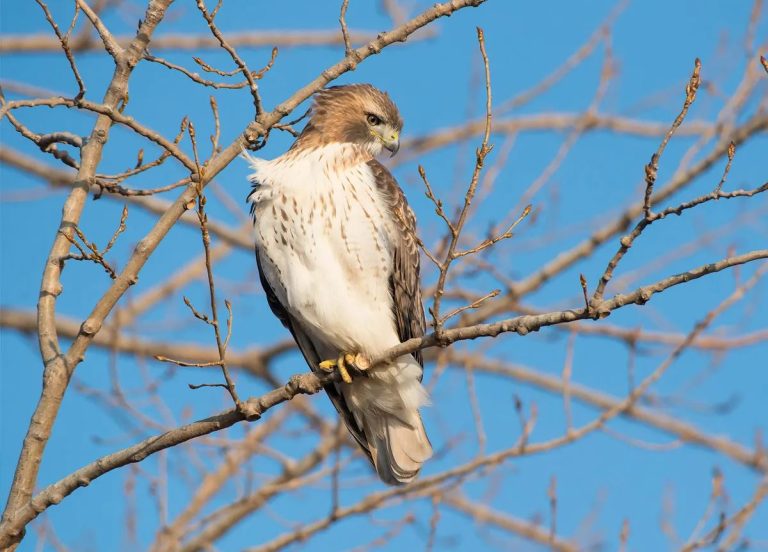Can Wild Turkeys Fly? Debunking the Myths and Discovering the Truth
By Rifat Ahmed – Birdwatching Expert with 13+ Years of Experience
When most people picture a turkey, they envision a heavy, waddling bird grounded on the forest floor or a barnyard fowl that never leaves the ground. But here’s a surprise that still amazes many newcomers to birdwatching: wild turkeys can fly—and they’re surprisingly good at it.
Over the past 13 years, I’ve spent countless mornings observing these magnificent birds in woodlands and open fields across North America. While domesticated turkeys are often flightless due to selective breeding, their wild counterparts are agile, fast, and skilled flyers. In this article, I’ll share everything I’ve learned about how, when, and why wild turkeys take to the skies.
Can Wild Turkeys Fly?
Yes, wild turkeys can fly—very well, in fact. They may not be long-distance flyers like geese or swans, but they are capable of powerful short bursts of flight that help them escape predators and navigate their woodland habitats.
According to All About Birds by the Cornell Lab of Ornithology, wild turkeys can fly at speeds of up to 55 miles per hour for short distances. Their flight is typically brief, but highly effective in helping them escape danger or reach safe roosting sites.
Why People Think Turkeys Can’t Fly
This common misconception stems from the domesticated turkey, which has been bred for meat production. These birds are much heavier and lack the necessary wing strength to achieve lift. Their large breast muscles, developed through selective breeding, restrict their ability to fly.
Wild turkeys, however, are a completely different story. Leaner, more agile, and perfectly adapted to their environment, wild turkeys use flight as a crucial survival strategy.
Anatomy of a Wild Turkey’s Flight
To understand how wild turkeys fly, it’s essential to look at their anatomy. Their wings, muscles, and lightweight bone structure are all uniquely suited for short, explosive bursts of flight.
Key Physical Adaptations:
- Short, broad wings: Ideal for sudden takeoffs and quick, controlled glides.
- Strong breast muscles: Powerful enough to lift the bird into flight, even if only briefly.
- Hollow bones: Like most birds, turkeys have lightweight bones that aid in flight.
- Tail fan: Used for balance and steering during aerial movement.
When startled, wild turkeys often run first, reaching speeds of 20-25 mph on the ground. If the threat persists, they’ll launch themselves into the air with a thunderous flap and glide to nearby trees or overbrush for safety.
How High and Far Can Wild Turkeys Fly?
Height:
Wild turkeys can fly up to 40 to 50 feet high, especially when roosting in tall trees. It’s common to see them fly into trees at dusk to escape ground predators for the night.
Distance:
While not marathon flyers, wild turkeys can cover a quarter to a full mile in a single flight if necessary. Their typical flight distance, however, ranges from 100 to 400 yards, depending on the landscape and urgency.
From my own observations in Appalachian woodlands and Texas scrublands, I’ve seen turkeys fly across rivers, leap from ravines, and land perfectly in tall oaks. It’s a sight that never gets old.
When Do Wild Turkeys Fly?
Turkeys are strategic flyers. They don’t spend much time in the air, but use flight for specific purposes.
1. Roosting at Night
One of the most common reasons wild turkeys fly is to roost in trees at night. Around dusk, they’ll flap upward into branches—sometimes in small family groups. This behavior keeps them safe from coyotes, foxes, and other nocturnal ground predators.
2. Escaping Predators
When startled, wild turkeys rely on flight as a last resort. They will first run and hide in dense underbrush. If that fails, they explode into the air with loud wingbeats and glide away at surprising speed.
3. Crossing Terrain
Wild turkeys will also fly over rivers, fences, ravines, or thick brush to reach feeding areas or escape from human activity. It’s not unusual to see a turkey fly across a road or a small creek in a matter of seconds.
Do Wild Turkeys Fly in Flocks?
Wild turkeys are social birds, but they don’t usually fly in large flocks like geese. They fly in small groups or individually, especially when roosting or escaping.
In autumn and winter, family groups—called “rafters”—stay close together and may take off nearly simultaneously when startled. The noise of several large birds lifting off at once can be startling to an unexpecting observer.
Wild Turkey Flight vs. Domestic Turkey
| Feature | Wild Turkey | Domestic Turkey |
|---|---|---|
| Flight Ability | Strong, short bursts | Almost none |
| Speed in Air | Up to 55 mph | Less than 10 mph (if at all) |
| Wing Shape | Broad, aerodynamic | Underdeveloped |
| Body Size | Lean and agile | Heavily muscled, bred for size |
| Purpose of Flight | Roosting, escaping, navigating | None |
Domestic turkeys have largely lost their ability to fly due to selective breeding for meat production. Their massive size and lack of flight muscle tone mean they rarely even attempt to lift off the ground.
Baby Turkeys (Poults) and Flying
One of the most fascinating things I’ve witnessed is just how early baby turkeys begin flying. Known as poults, these young birds start flapping and gliding as early as 10 to 14 days old.
They may not reach full heights like adults, but they’re already practicing short bursts to climb into low branches or escape threats. This early development is crucial to their survival in the wild.
Best Times and Places to Watch Wild Turkeys Fly
If you’re hoping to witness the impressive flight of a wild turkey, timing and location are everything. The best times to observe them taking off or gliding into trees are during the early morning (dawn) and late evening (just before dusk). These are the moments when turkeys leave or return to their roosting sites, typically located in tall hardwood trees like oaks or pines. Turkeys often roost in areas with good visibility and quick access to cover—making forest edges, open fields bordered by trees, and riverbanks prime viewing spots.
Over the years, I’ve had the most success spotting turkey flights in the following North American regions:
- Appalachian foothills (Tennessee, North Carolina)
- Ozark Mountains (Arkansas, Missouri)
- Southeastern pine forests (Georgia, Alabama, Mississippi)
- Rocky Mountain foothills (Colorado, Montana)
- Mixed hardwood woodlands in the Northeast (New York, Pennsylvania, Vermont)
Use binoculars and approach quietly—turkeys have exceptionally sharp eyesight and will flee at the slightest movement or sound. Patience, camouflage, and choosing a good vantage point near a roost tree can make all the difference in witnessing these powerful birds take to the sky.
How to Differentiate Between a Flying Turkey and Other Large Birds
Flying turkeys can be mistaken for other large woodland birds like pheasants, grouse, or even hawks. But here are key differences:
| Bird | Wing Sound | Takeoff Style | Flight Path |
|---|---|---|---|
| Wild Turkey | Loud, heavy flapping | Explosive upward jump | Strong glide |
| Grouse | Whirring wings | Sudden burst from ground | Short burst |
| Hawk | Silent or soft wingbeats | Graceful lift | Soaring flight with glides |
| Pheasant | Whirring wings | Short, low flight | Darting flight, then drop |
Turkeys are larger, louder, and more direct in their flight. Their landings are often abrupt and less graceful than raptors.
Threats to Wild Turkey Flight and Survival
While turkeys are still widespread across much of North America, their populations faced major declines in the early 20th century. Habitat loss, overhunting, and deforestation greatly reduced their numbers.
Thanks to conservation efforts, including reintroduction programs and forest management, wild turkey populations have rebounded. However, threats remain:
- Habitat fragmentation limits their ability to forage and fly.
- Vehicle collisions occur when turkeys fly across roads.
- Predators, especially during roosting, can reduce young survival.
- Climate change may alter their seasonal movements and habitats.
Maintaining large, unbroken tracts of mixed forest is key to preserving wild turkey flight behavior and ecology.
Final Thoughts from the Field
After 13 years in the field, I still find it thrilling to watch a wild turkey take to the skies. Their wings create a loud whooshing sound that echoes through the trees, and their mid-air glide is both powerful and elegant.
If you’ve never seen one fly, you’re not alone—it happens quickly and often away from open view. But once you do, you’ll never again doubt their aerial ability.
Wild turkeys are far from clumsy ground dwellers. They are intelligent, alert, and completely capable of navigating their world by air when the situation calls for it.
FAQ: Can Wild Turkeys Fly?
Q: Do wild turkeys fly long distances like geese?
No. Wild turkeys are strong but short-distance fliers. They typically fly under half a mile, often just to roost or escape danger.
Q: Can turkeys fly over fences or roads?
Yes. Wild turkeys often fly over obstacles like roads, rivers, and fences with ease.
Q: Why don’t we see turkeys flying more often?
Turkeys prefer to stay on the ground unless threatened or roosting. Their flight is quick and typically occurs in forested areas.
Q: Can domestic turkeys fly too?
Not really. Domestic turkeys are too heavy due to selective breeding and lack the wing strength to fly.
Q: How old are baby turkeys when they can start flying?
Poults begin fluttering and gliding as early as 10–14 days old.

